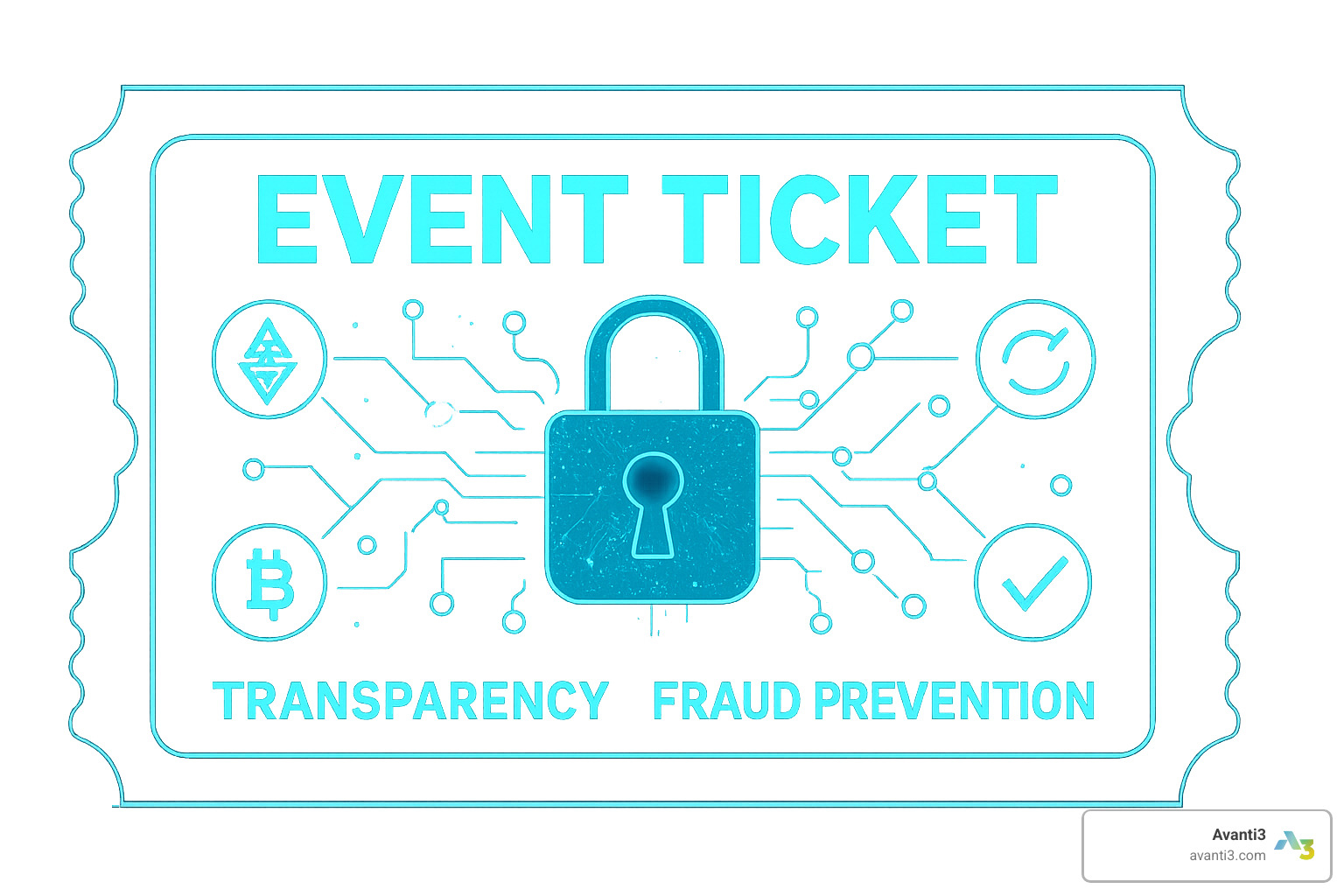Blockchain based ticketing: Revolution 2025
Why Traditional Ticketing Is Failing Fans and Creators
Blockchain based ticketing represents a approach to event management that uses distributed ledger technology to create secure, transparent, and tamper-proof digital tickets. Here’s what you need to know:
Key Benefits:
- Fraud Prevention: Each ticket is a unique digital asset that cannot be counterfeited
- Transparency: All transactions are recorded on an immutable blockchain ledger
- Smart Contracts: Automated rules that can control resale prices and artist royalties
- Post-Event Utility: Tickets can become digital collectibles with ongoing value
- Direct Fan Connection: Eliminates intermediaries between creators and audiences
Main Challenges:
- Scalability: Current blockchain networks struggle with high transaction volumes
- User Experience: Requires crypto wallets and technical knowledge
- Industry Adoption: Traditional ticketing companies control 80% of the market
- Cost: Gas fees can make transactions expensive during peak times
The traditional ticketing industry is broken. Fans pay inflated prices, battle bots for popular events, and worry about counterfeit tickets. Meanwhile, creators watch scalpers profit from their work while data breaches expose millions of customer accounts – like when Ticketfly’s 2018 hack compromised 26 million people’s information.
For tech-savvy creators and brands, this represents both a massive problem and an unprecedented opportunity. Blockchain based ticketing promises to solve these issues while creating new revenue streams and deeper fan engagement.
As Samir ElKamouny AV, I’ve spent years helping entrepreneurs leverage cutting-edge technology to transform their businesses and open up new revenue opportunities. Having worked with countless creators frustrated by traditional platform limitations, I’ve seen how blockchain based ticketing can revolutionize fan engagement and monetization strategies.
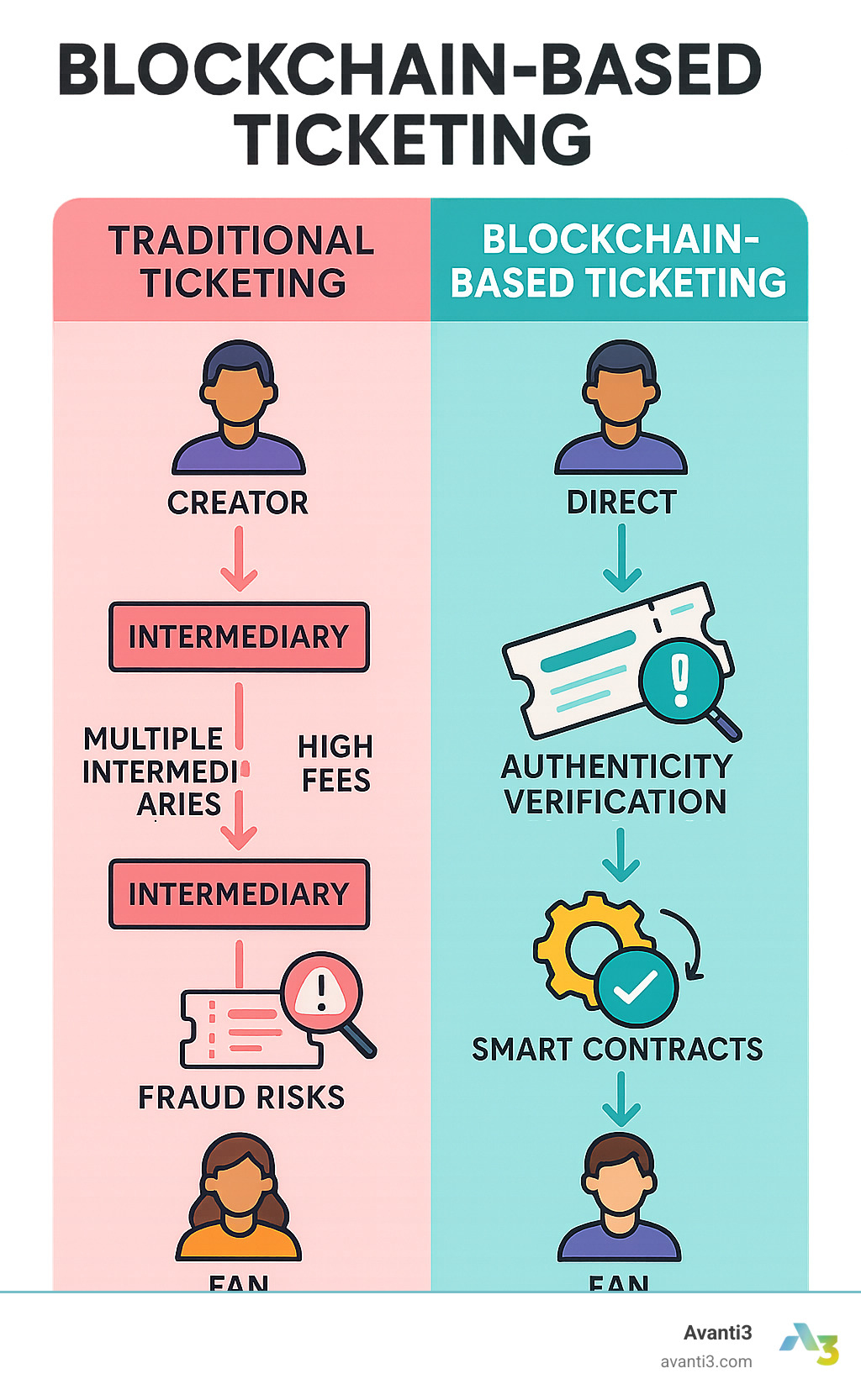
Introduction: The Broken Promise of Traditional Ticketing

Picture this: You’re a devoted fan who’s been waiting months for your favorite artist’s tour announcement. The day finally arrives, and you’re ready at 10 AM sharp when tickets go on sale. You join the virtual queue with thousands of other hopeful fans, watching that spinning wheel for what feels like forever.
Then it happens. You finally get through, only to find that the best seats are already gone – sold out in literally seconds. The remaining tickets come with mysterious “convenience fees” that somehow add 30-40% to your total cost. Sound familiar?
You’re not alone in this frustrating experience. The traditional ticketing system has become a maze of problems that hurt both fans and creators. One major platform controls 80% of the market share and serves as the sole ticket provider for 80 of the top 100 arenas. This concentration of power has created a system that puts profits before people.
The numbers paint a clear picture of how broken things have become. The average cost of an event ticket has jumped to $46.69, representing a 4.2% increase in just one year. But high prices are just the tip of the iceberg.
Bots and scalpers have turned ticket buying into an unfair game. Despite the BOTS Act of 2016 banning automated ticket purchasing software, the problem persists and has actually gotten worse. As one industry insider admitted, “That game has been going on for decades. As we get more sophisticated they get more sophisticated.”
Counterfeit tickets create heartbreak for fans and headaches for event organizers. Traditional mobile tickets with static QR codes can be easily duplicated or forged, leaving honest fans stranded at venue gates after paying real money for fake tickets.
Data breaches have become alarmingly common. The 2018 Ticketfly hack exposed approximately 26 million accounts, showing how centralized systems create massive security risks. When your personal and payment information is stored in one place, it becomes a tempting target for hackers.
The lack of transparency means fans have no idea how tickets are actually allocated or priced. Some platforms have been accused of working with scalpers, potentially collecting up to $658,000 from reselling practices for major tours. It’s a system that feels rigged against the people it’s supposed to serve.
Perhaps most frustrating of all, traditional tickets become worthless the moment an event ends. That concert ticket that cost you $150? It’s just a digital receipt with zero ongoing value. This represents a massive missed opportunity for both fan engagement and creator monetization.
These aren’t just minor inconveniences – they’re fundamental flaws that have turned the ticketing industry into a barrier between artists and their audiences. Instead of connecting creators with fans, the current system often feels like it’s designed to extract maximum profit from both sides.
This is where blockchain based ticketing enters the picture, promising to solve these deep-rooted problems while creating entirely new possibilities for fan engagement and creator revenue. But before we dive into the solution, it’s important to understand just how broken the current system really is.
The Blockchain Dream: A New Era of Secure and Transparent Events
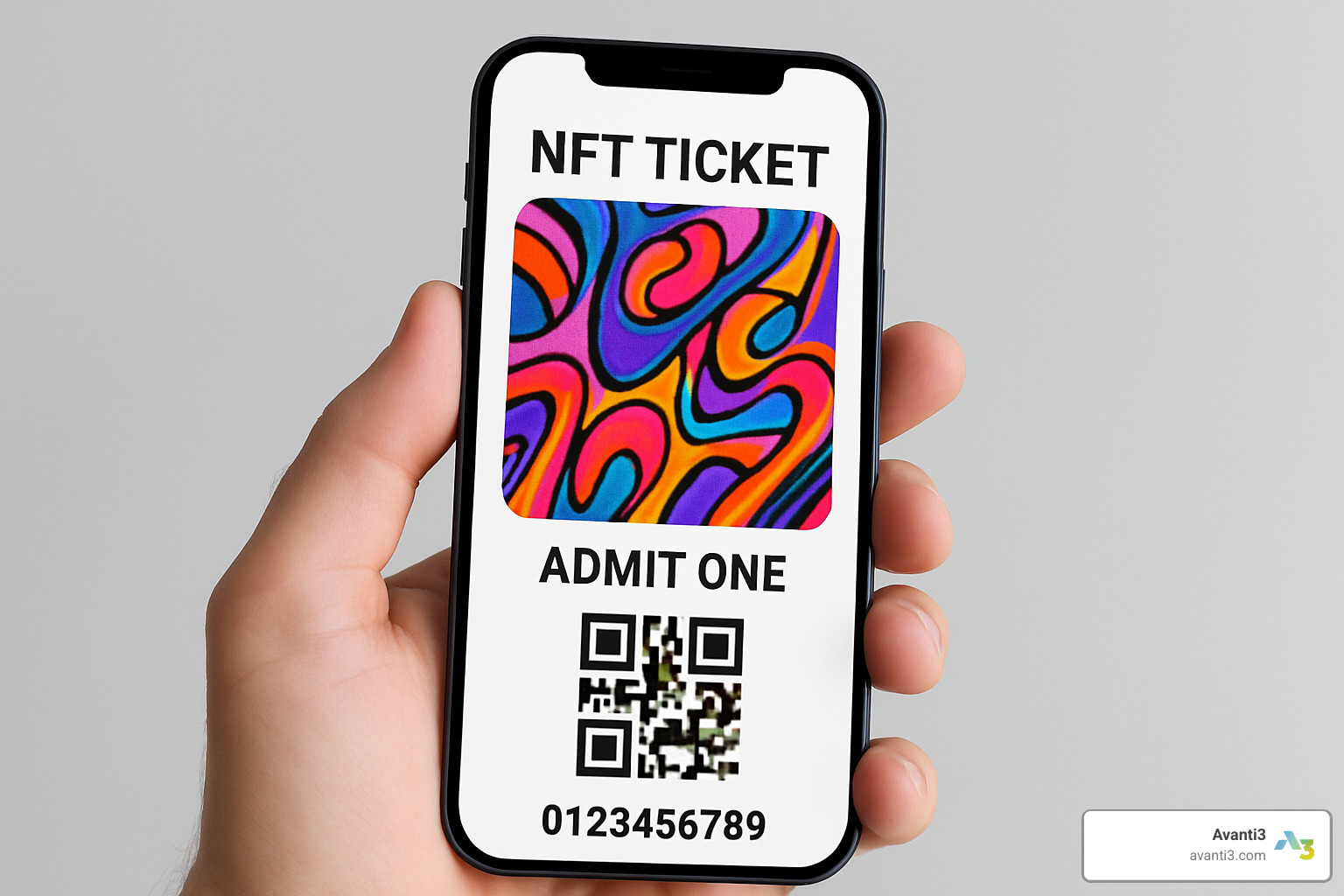
What if buying a ticket was as simple as downloading an app, but with rock-solid security that made fraud impossible? That’s the promise of blockchain based ticketing – and it’s not just wishful thinking. This technology is already changing how we think about event access, fan engagement, and artist monetization.
Think of blockchain as a digital ledger that’s shared across thousands of computers worldwide. Unlike traditional systems where one company controls all the data, blockchain creates a decentralized network where no single entity can manipulate or corrupt the information. When you buy a ticket, it’s recorded on this distributed ledger, creating an immutable record that can’t be faked or altered.
NFT tickets are digital tickets stored on a blockchain, making each one a unique digital asset. Just like a physical ticket has specific seat numbers and event details, each NFT ticket has a unique cryptographic signature that proves its authenticity.
The beauty of this system lies in its transparency. Every transaction is visible on the blockchain, creating a complete audit trail from the moment a ticket is created until it’s used. This eliminates the shadowy world of ticket manipulation that plagues traditional platforms.
For fans, this means guaranteed authenticity – no more worrying about counterfeit tickets. For artists, it opens up new revenue streams through programmable royalties and direct fan engagement. And for event organizers, it provides complete transparency into ticket sales and ownership.
The 2019 UEFA Super Cup proved this wasn’t just theory. They used blockchain technology to distribute over 80% of their tickets, dramatically reducing fraud and scalping while giving fans a smoother, more secure experience.
How Smart Contracts and NFTs Create a Secure Ticket
Here’s where things get really interesting. Smart contracts are like digital agreements that execute themselves automatically when certain conditions are met. Combined with NFTs, they create tickets that are far more powerful than anything possible with traditional systems.
Each ticket starts as an NFT – a unique digital asset that can’t be duplicated. Think of it like a digital fingerprint that proves ownership. But unlike a static QR code that can be screenshot and shared, NFTs are cryptographically secured and tied to specific blockchain addresses.
The real magic happens with programmable tickets. Smart contracts can embed rules directly into each ticket. Want to cap resale prices at 110% of face value? The smart contract enforces it automatically. Want to send artists a 10% royalty on every resale? It happens instantly without any middleman.
Ownership verification becomes instant and foolproof. Instead of relying on a central database that can be hacked or manipulated, the blockchain provides immediate proof of who owns each ticket. How NFT ticketing works is actually quite neat – each transfer is recorded permanently, creating an unbreakable chain of ownership.
Provenance tracking means you can see the complete history of any ticket. Was it bought directly from the artist? Transferred to a friend? Resold legitimately? It’s all there in the blockchain record, making it nearly impossible for bad actors to introduce fake tickets into the system.
This level of security reduces counterfeiting to almost zero. You can’t photocopy a blockchain entry or create a fake NFT without the proper cryptographic keys. It’s like trying to forge a fingerprint – theoretically possible but practically impossible at scale.
Opening up Value for Organizers and Artists
Traditional ticketing platforms treat artists like product suppliers and fans like walking wallets. Blockchain based ticketing flips this model entirely, putting creators back in control of their relationship with their audience.
Secondary market royalties might be the most game-changing feature. When someone resells a traditional ticket, the artist gets nothing. But with smart contracts, artists can automatically receive a percentage of every resale. If a ticket doubles in value because demand explodes, the artist shares in that success instead of watching scalpers profit from their work.
Direct fan communication becomes possible without going through platform intermediaries. Artists can send exclusive content, backstage updates, or special offers directly to ticket holders. This creates a more personal connection that traditional platforms actively discourage because it threatens their control.
Vendor management gets streamlined through automated smart contracts. Payment to security, catering, or technical crews can be released automatically when services are delivered. If a vendor doesn’t meet their obligations, penalties can be triggered without lengthy disputes.
Data transparency gives artists real insights into their audience while respecting privacy. Instead of platforms hoarding fan data as a competitive advantage, blockchain systems can provide artists with clear analytics about their ticket holders’ preferences and behaviors.
Reduced operational costs come from eliminating multiple intermediaries. Traditional ticketing involves primary sellers, secondary markets, payment processors, and verification systems – each taking their cut. Blockchain can consolidate many of these functions into automated smart contracts.
Real-world case studies are already emerging. Artists using blockchain ticketing report stronger fan engagement, virtually zero fraud, and new revenue streams that were impossible with traditional systems. The technology is moving from experimental to practical.
For creators ready to explore these possibilities, NFT Marketplace Development provides the technical foundation to build custom ticketing solutions that align with specific brand and community needs.
Reality Check: Why Hasn’t Blockchain Ticketing Taken Over?
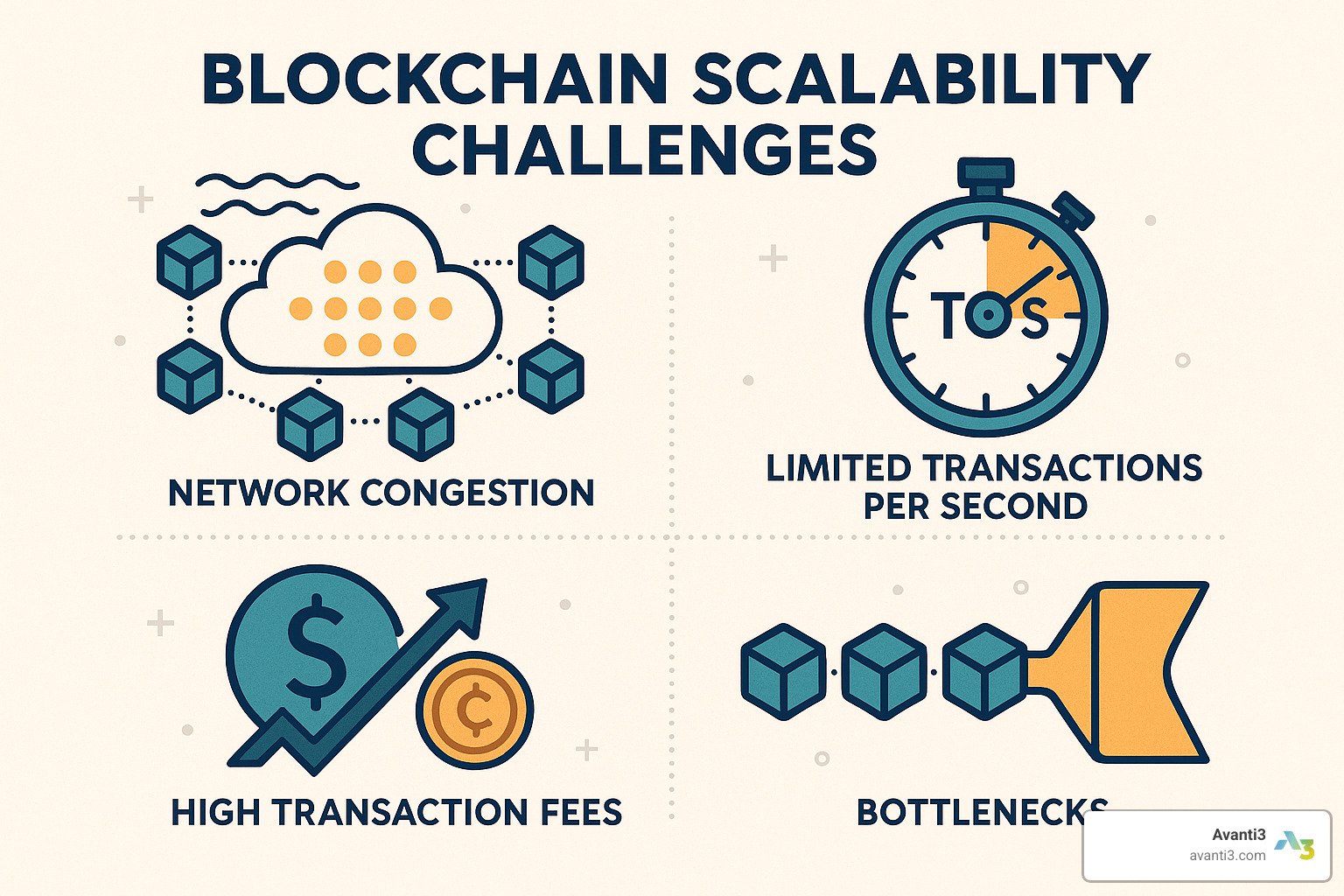
If blockchain ticketing is so promising, why isn’t every arena using it yet? In short, the technology must still clear both technical and human problems before it can power million-ticket drops for global tours.
Early start-ups proved the concept but struggled to scale, pivoted into NFT marketplaces, or folded after burning through investor cash. That history created understandable skepticism, yet it also delivered a clear list of issues that now guide newer, better solutions.
The Technical Bottlenecks: Scalability, Fees, and Connectivity
The famous scalability trilemma forces most public blockchains to pick two: decentralization, security, or speed. Ethereum, for example, processes only 15–30 transactions per second—fine for art NFTs, disastrous for a Taylor-Swift-level on-sale. When demand spikes, so do gas fees, turning a $25 ticket into a $75 purchase once network costs are included.
Layer-2 rollups, sidechains, and sharding are rapidly improving throughput and slashing fees, but they add architectural complexity. Venues must also think about weak cellular or Wi-Fi signals; a ticket that lives on-chain still needs a live data connection to verify ownership at the gate.
Finally, most systems keep only essential data on-chain while storing seat maps and images off-chain. That hybrid approach is cheaper and faster, yet it chips away at blockchain’s vaunted immutability.
The Human Element: Adoption Problems and Industry Inertia
For mainstream fans, crypto wallets, seed phrases, and gas settings feel intimidating. Until buying a blockchain ticket is as easy as tapping Apple Pay, adoption will lag.
Incumbent ticketing giants have little incentive to disrupt their own fee-laden model, and venues worry about unclear regulations surrounding NFTs. Add the well-publicized failures of first-generation platforms, and risk-averse decision makers often choose to wait.
The takeaway: technical puzzles are being solved quickly, but mass adoption will arrive only when the user experience becomes invisible and industry stakeholders see a clear financial upside.
The Great Scalping Debate and the Future of Blockchain-Based Ticketing
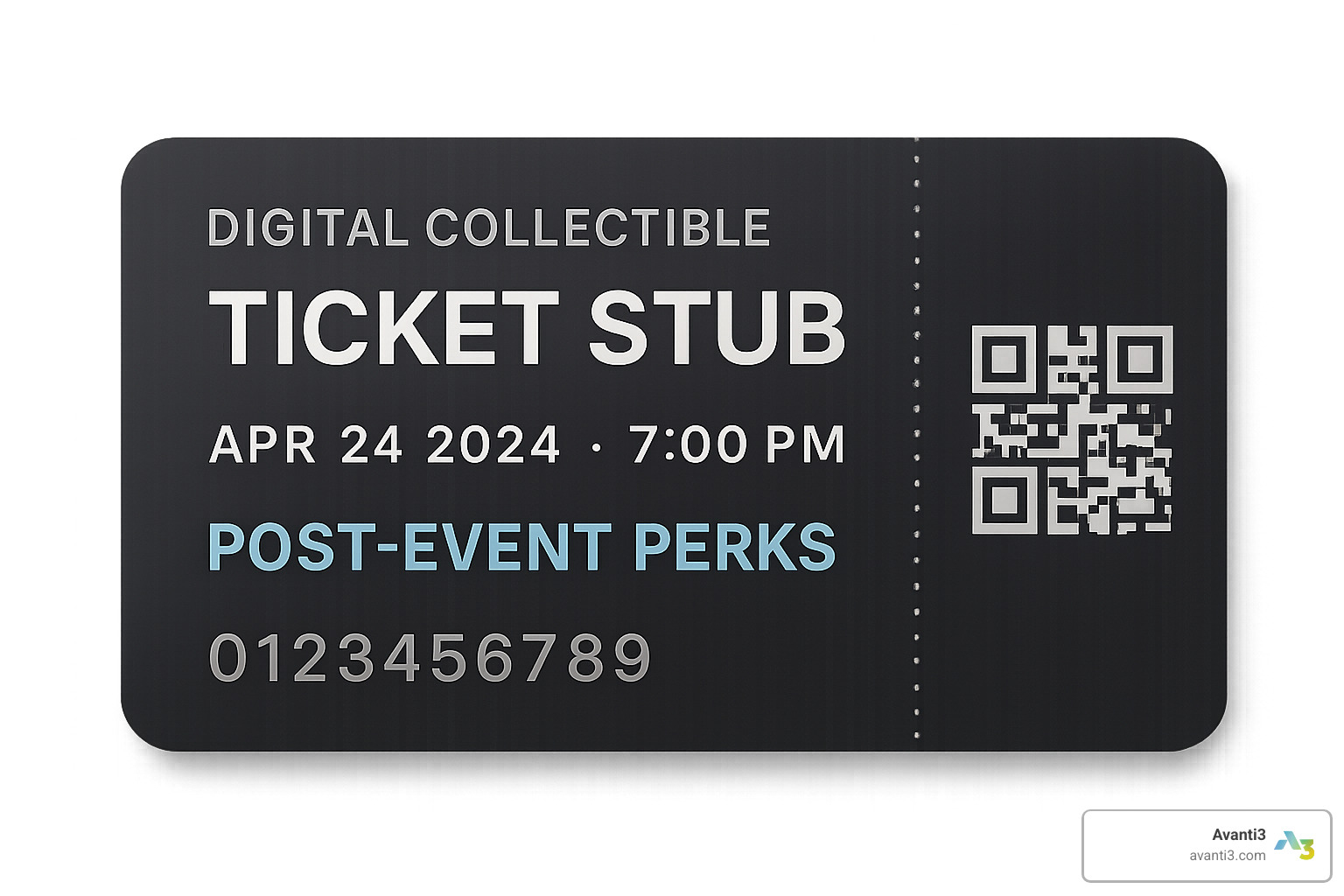
Can blockchain actually end scalping? Not entirely—but it can make the practice far less lucrative while opening brand-new value paths for artists and fans.
How Smart Contracts Reshape the Secondary Market
- Automatic price caps: Program a maximum resale price—any attempt to list higher simply fails.
- Built-in royalties: A preset percentage flows to the artist or organizer every time the ticket changes hands.
- Transparent ledgers: Every transfer is public, making it easy to spot wallets buying hundreds of seats in seconds.
- Bot resistance: Suspicious transaction patterns can be blocked in real time.
Scalping won’t disappear, but it shifts from an unregulated Wild West to a controlled, creator-friendly ecosystem.
Beyond the Gate: Post-Event Utility
Traditional tickets die when the encore ends. NFT tickets can keep giving:
- Digital memorabilia with unique art or live photos
- Surprise airdrops—exclusive tracks, discount codes, or VIP passes
- Attendance-based loyalty: prove you were at three shows, earn early access to the fourth
- Community access: the ticket can double as a membership pass to private fan spaces
Tools like NFT Engagement Tools and Digital Fan Engagement make these ideas plug-and-play. The real revolution isn’t just fewer scalpers—it’s turning a one-night event into a long-term relationship.
Frequently Asked Questions about Blockchain Ticketing
Let’s tackle the most common questions people have about blockchain based ticketing. These are the real concerns I hear from creators and fans who are curious about this technology but aren’t sure if it’s right for them.
What is an NFT ticket?
Think of an NFT ticket as a digital pass that’s impossible to fake. It’s a unique digital asset stored on a blockchain that represents your right to enter an event. What makes it special is that it’s cryptographically secured – meaning it has a unique digital fingerprint that proves it’s authentic.
Imagine a traditional paper ticket, but instead of relying on special paper or holograms to prevent counterfeiting, an NFT ticket uses advanced mathematics to guarantee its uniqueness. Each ticket has a distinct digital signature that’s recorded on the blockchain, creating a permanent, tamper-proof record of its creation and ownership.
The beauty is in the transparency. Unlike traditional tickets stored in a company’s private database, NFT tickets exist on a public blockchain where anyone can verify their authenticity. This creates a system where trust is built into the technology itself, rather than relying on the reputation of a ticketing company.
Can blockchain ticketing really stop all fraud?
Here’s the honest answer: no system is 100% foolproof, but blockchain based ticketing comes pretty close to eliminating traditional fraud. By creating a single, verifiable, and tamper-proof record for each ticket, it virtually eliminates counterfeiting and unauthorized duplication.
The key difference is immutability. When a ticket is created on the blockchain, its record can’t be changed or deleted. This means there’s always a clear, permanent history of who owns each ticket and how it was transferred. Smart contracts can also enforce rules about resale, automatically preventing tickets from being sold above certain prices or ensuring artists get royalties from secondary sales.
But let’s be realistic – determined fraudsters will always look for new ways to exploit systems. The goal isn’t to eliminate every possible form of fraud, but to make it so difficult and unprofitable that it’s no longer worth attempting. In traditional systems, creating fake tickets is relatively easy. With blockchain, it would require breaking the cryptographic security of an entire network – something that’s theoretically possible but practically impossible.
Do I need to be a crypto expert to use a blockchain ticket?
Absolutely not. The best blockchain ticketing platforms are designed to hide all the technical complexity behind a simple, familiar interface. For most users, buying and using a blockchain ticket should feel just like using any other mobile ticket app – with the added benefits of guaranteed authenticity and potential post-event perks.
Modern platforms handle the blockchain interactions automatically. You might purchase a ticket with a credit card, receive it in a mobile app, and use it to enter an event without ever thinking about cryptocurrency or blockchain technology. The platform manages your crypto wallet, handles gas fees, and takes care of all the technical details.
However, I’ll be honest – the user experience still has room for improvement. Some platforms may require you to set up a crypto wallet or understand concepts like transaction fees. But the industry is rapidly moving toward solutions that make blockchain technology invisible to end users.
The real question isn’t whether you need to be a crypto expert, but whether the platform you’re using has done a good job of making the technology accessible. The best blockchain ticketing experiences feel effortless, while the worst ones require a computer science degree to steer.
Conclusion: So, Is It Worth the Hype?
The early buzz oversold blockchain ticketing as a silver bullet, but dismissing it now would be a bigger mistake. Recent advances in Layer-2 networks, cleaner user interfaces, and falling gas fees are pushing the concept from “interesting experiment” to “viable upgrade.”
What truly matters isn’t fraud reduction—it’s everything that becomes possible afterward: perpetual royalties, collectible stubs, loyalty programs, and direct creator-to-fan channels that no middleman can shut down.
At Avanti3 we focus on these Web3-improved experiences, weaving NFTs, AR, and AI into seamless journeys that feel familiar to fans but deliver entirely new economics to creators. Curious what that looks like for your next launch? Explore how to build the future of fan engagement with Web3 creator platforms.
Blockchain ticketing won’t replace every legacy platform tomorrow, yet the momentum is unmistakable. Start testing now, and you’ll be ready when the breakthrough moment arrives.

